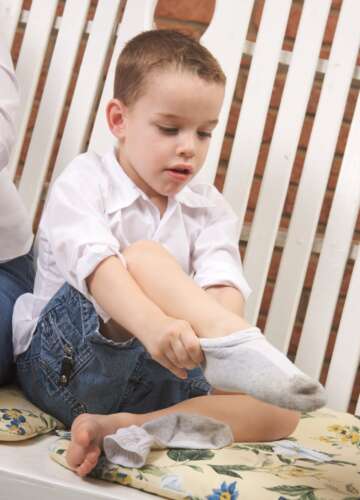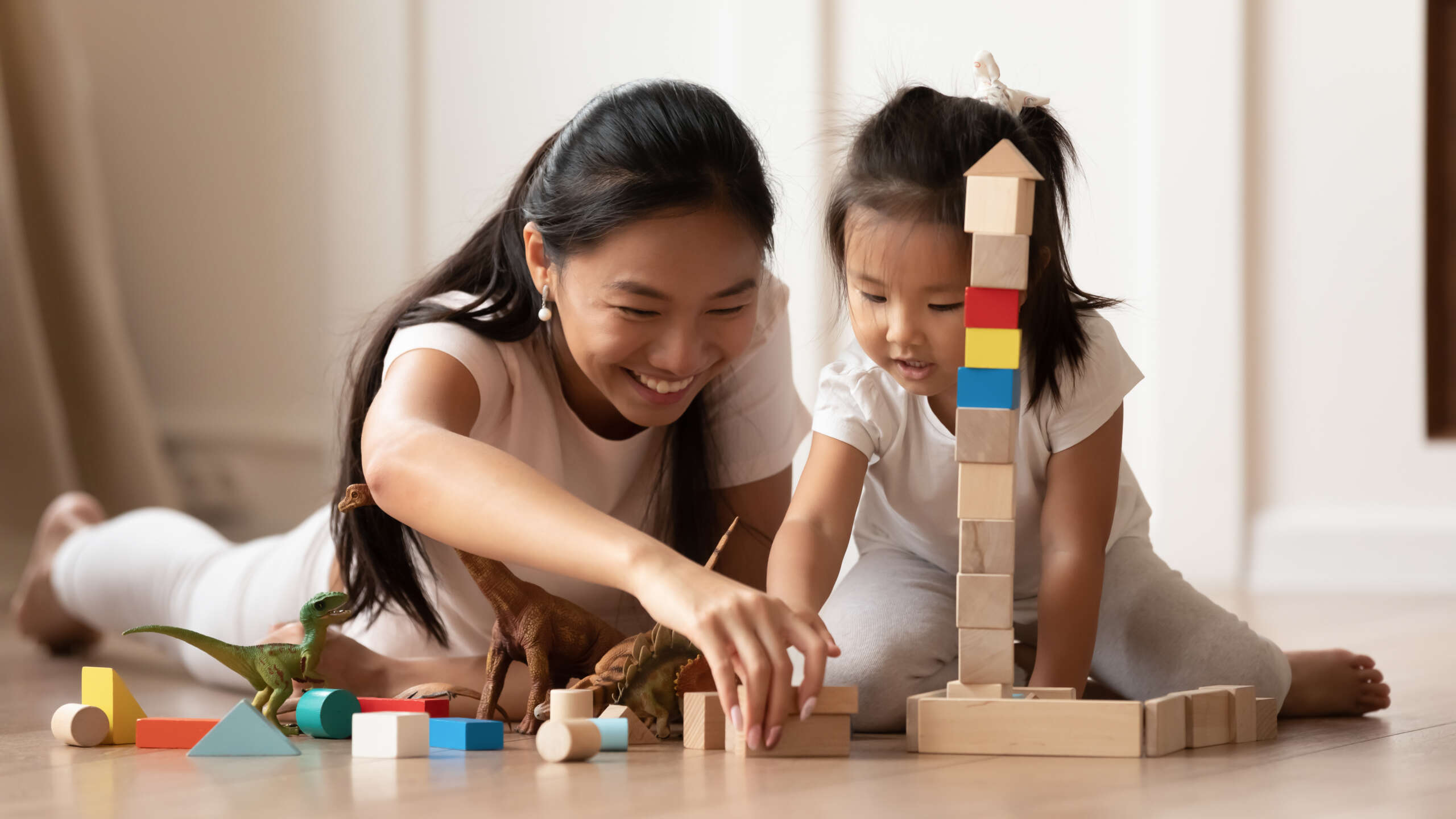Occupational Therapy
Occupational Therapy provides a wide range of therapeutic interventions to develop and/or improve a child’s abilities necessary for the many “occupations” of childhood such as play, self-care, learning, school performance, community skills, and socializing.
Occupational Therapy
Occupational Therapy provides a wide range of therapeutic interventions to develop and/or improve a child’s abilities necessary for the many “occupations” of childhood such as play, self-care, learning, school performance, community skills, and socializing.
Sensory Processing -
An Occupational Therapy Practitioner can evaluate your child’s sensory needs and create a personalized plan of action to feed their sensory system the input that it craves while restructuring the way that the central nervous system processes input that is not being accurately interpreted by the brain (under-responsive or over-responsive).
A child can be both over-responsive and under-responsive and we can tailor therapy to your child’s individual needs. This is a holistic approach that is strengths-based and helps to simultaneously build self-confidence.
Under-responsiveness might look like: difficulty with emotional regulation, poor body awareness, overly risky play, decreased attention, seeking movement, mouthing or chewing non-food objects, poor awareness of messy hands or face, inaccurate perception of pain or temperature, seeking deep hugs or swaddling.
Over-responsiveness might look like: car sickness, avoiding having feet off the ground/ moving equipment, picky eating, difficulty tolerating clothing textures, difficulty tolerating loud sounds, difficulty tolerating grooming tasks, difficulty tolerating messy play, anxiety, over-reliance on routine, difficulty with transitions, difficulty with emotional regulation.

An Occupational Therapy Practitioner can evaluate your child’s sensory needs and create a personalized plan of action to feed their sensory system the input that it craves while restructuring the way that the central nervous system processes input that is not being accurately interpreted by the brain (under-responsive or over-responsive).
A child can be both over-responsive and under-responsive and we can tailor therapy to your child’s individual needs. This is a holistic approach that is strengths-based and helps to simultaneously build self-confidence.

Under-responsiveness might look like: difficulty with emotional regulation, poor body awareness, overly risky play, decreased attention, seeking movement, mouthing or chewing non-food objects, poor awareness of messy hands or face, inaccurate perception of pain or temperature, seeking deep hugs or swaddling.
Over-responsiveness might look like: car sickness, avoiding having feet off the ground/ moving equipment, picky eating, difficulty tolerating clothing textures, difficulty tolerating loud sounds, difficulty tolerating grooming tasks, difficulty tolerating messy play, anxiety, over-reliance on routine, difficulty with transitions, difficulty with emotional regulation.

Self-Care -
At Valley Kids Therapy, an occupational therapy practitioner can work with your child on dressing, manipulating fasteners, self-feeding, grooming skills, etc.
Emotional Regulation -
Many children with sensory processing differences also present with decreased emotional regulation and poor frustration tolerance. An occupational therapy practitioner can work with your child on recognizing emotions and implementing calming strategies when needed. We can also help with overall sensory regulation which is closely tied to a child’s emotional state.
Play Skills & Executive Functioning -
At Valley Kids Therapy, we can work on developing age-appropriate play and cognitive skills such as reciprocal play, engagement with age-appropriate cause/ effect toys, turn-taking, attention, sequencing, working memory, joint attention, following directions, follow adult-directed activities, and transitioning between activities.

Self-Care -
At Valley Kids Therapy, an occupational therapy practitioner can work with your child on dressing, manipulating fasteners, self-feeding, grooming skills, etc.

Emotional Regulation -
Many children with sensory processing differences also present with decreased emotional regulation and poor frustration tolerance. An occupational therapy practitioner can work with your child on recognizing emotions and implementing calming strategies when needed. We can also help with overall sensory regulation which is closely tied to a child’s emotional state.
Play Skills & Executive Functioning -
At Valley Kids Therapy, we can work on developing age-appropriate play and cognitive skills such as reciprocal play, engagement with age-appropriate cause/ effect toys, turn-taking, attention, sequencing, working memory, joint attention, following directions, follow adult-directed activities, and transitioning between activities.

Fine Motor / Visual Perceptual Skills -

Core strength, shoulder strength, and hand strength are the collective foundation for great fine motor skills, and we take an integrated approach to strengthen the body to provide a stable base for success.
An occupational therapy practitioner can work with your child on increasing fine motor proficiency for manipulating fasteners; opening containers; dexterity for lacing, folding, beading, and picking up small objects; scissor skills; visual perception for pre-writing strokes and copying shapes; correcting pencil grasp; handwriting skills; visual perception for puzzles.

Core strength, shoulder strength, and hand strength are the collective foundation for great fine motor skills, and we take an integrated approach to strengthen the body to provide a stable base for success.
An occupational therapy practitioner can work with your child on increasing fine motor proficiency for manipulating fasteners; opening containers; dexterity for lacing, folding, beading, and picking up small objects; scissor skills; visual perception for pre-writing strokes and copying shapes; correcting pencil grasp; handwriting skills; visual perception for puzzles.
Postural Control / Bilateral Coordination / Crossing Midline -
The root of many motor delays lies in weak core strength, which is an area that we target through play. An occupational therapy practitioner can also work on bilateral coordination (the coordination of the two sides of the body working together for a common task). This skill is required for dressing, cutting, writing, lacing, beading, jumping jacks, peddling a bike, etc.
Additionally, some children have difficulty with crossing the midline of their bodies (the midline is the invisible equator that divides the body into right and left sides). This sometimes makes a child appear ambidextrous, clumsy, or causes them to turn their whole body to grab an object instead of bringing the arm across the body. These examples are an indication of a poor connection across the hemispheres of the brain and occupational therapy practitioners are trained to address this in a fun and engaging way.


The root of many motor delays lies in weak core strength, which is an area that we target through play. An occupational therapy practitioner can also work on bilateral coordination (the coordination of the two sides of the body working together for a common task). This skill is required for dressing, cutting, writing, lacing, beading, jumping jacks, peddling a bike, etc.
Additionally, some children have difficulty with crossing the midline of their bodies (the midline is the invisible equator that divides the body into right and left sides). This sometimes makes a child appear ambidextrous, clumsy, or causes them to turn their whole body to grab an object instead of bringing the arm across the body. These examples are an indication of a poor connection across the hemispheres of the brain and occupational therapy practitioners are trained to address this in a fun and engaging way.
